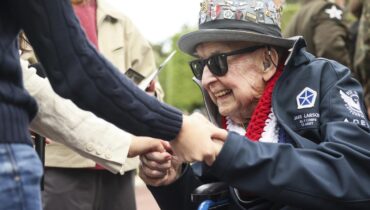📌 5 Essential Life Skills Children Should Learn Early to Protect Themselves and Help Others

Posted 3 September 2025 by: Admin
Teaching life-saving skills isn’t about strength—it’s about calm, clear thinking and simple actions children can practice until they become instinct.
Life-Saving Reflexes Come From Calmness, Not Just Strength
Sometimes the key to saving lives lies not in force, but in alertness and practical skills. For children, learning how to respond to danger early is both self-protection and a way to help others in critical moments.
Essential Life Skills Children Should Learn Early
Even young children can master crucial skills with the right guidance. Here are five foundational abilities every parent should begin teaching as soon as possible.
1. Recognizing Dangerous Situations
Kids may struggle to distinguish normal events from real danger. Teach them to spot warning signs so they respond quickly—without panic.
Examples: A playmate sinks under water and doesn’t resurface; an adult collapses and lies motionless; someone is unconscious in public. Children must also know not to jump in if it’s unsafe or beyond their ability.
2. Calling for Help the Right Way
Knowing how to summon help can save lives. Train children to shout loudly, attract attention, and run to the nearest adult instead of attempting a risky rescue.
Practice phrase: “Find an adult – Don’t jump in – Shout for help!” Role-play builds confidence and automatic reflexes.
3. Using Tools Instead of Acting Recklessly
Compassion can push a child to leap into water even if they can’t swim—this is dangerous. Teach them to use tools within reach (a stick, rope, plastic container, or floating object) to assist safely from land.
4. Communicating in Stressful Situations
Simple, encouraging words help a distressed person stay calm until adults arrive.
- “Hold on, help is coming!”
- “I’m getting an adult right now—don’t be afraid!”
These phrases reassure the victim and give children a sense of control, reducing their own fear.
5. Practicing Until It Becomes a Habit
Children learn best through repetition and play. Turn skills into games, role-play scenarios, and quick drills at home or school so calm, safe actions become instinctive.
What Parents Can Do
- Introduce early: Begin around ages 3–4 with age-appropriate explanations.
- Make practice playful: Pretend to be the person in need; let the child practice calling for help and fetching safe tools.
- Reinforce with questions: “If your friend sinks in the pool, what’s the first thing you do?”
- Avoid fear tactics: Explain the purpose of each skill instead of using threats.
- Model behavior: Children copy adults—show how to help and how to call for assistance.
- Use short videos: Watch safety clips together and discuss what to do.
Final Note
Life skills don’t come only from books or classes—they grow from everyday lessons parents teach. With a little time and practice, children gain a priceless gift: the ability to stay calm, protect themselves, and even save lives when it matters most.



















